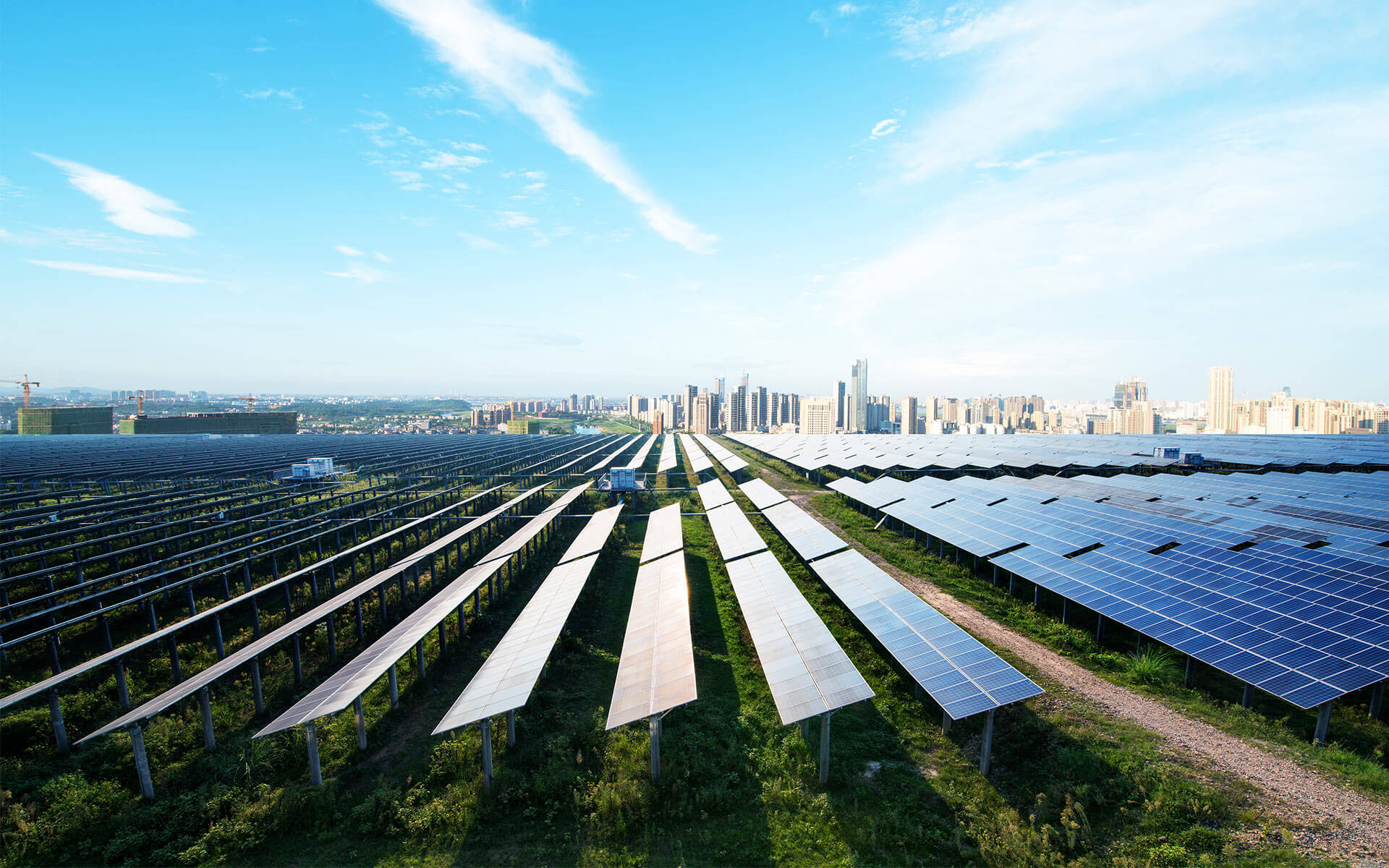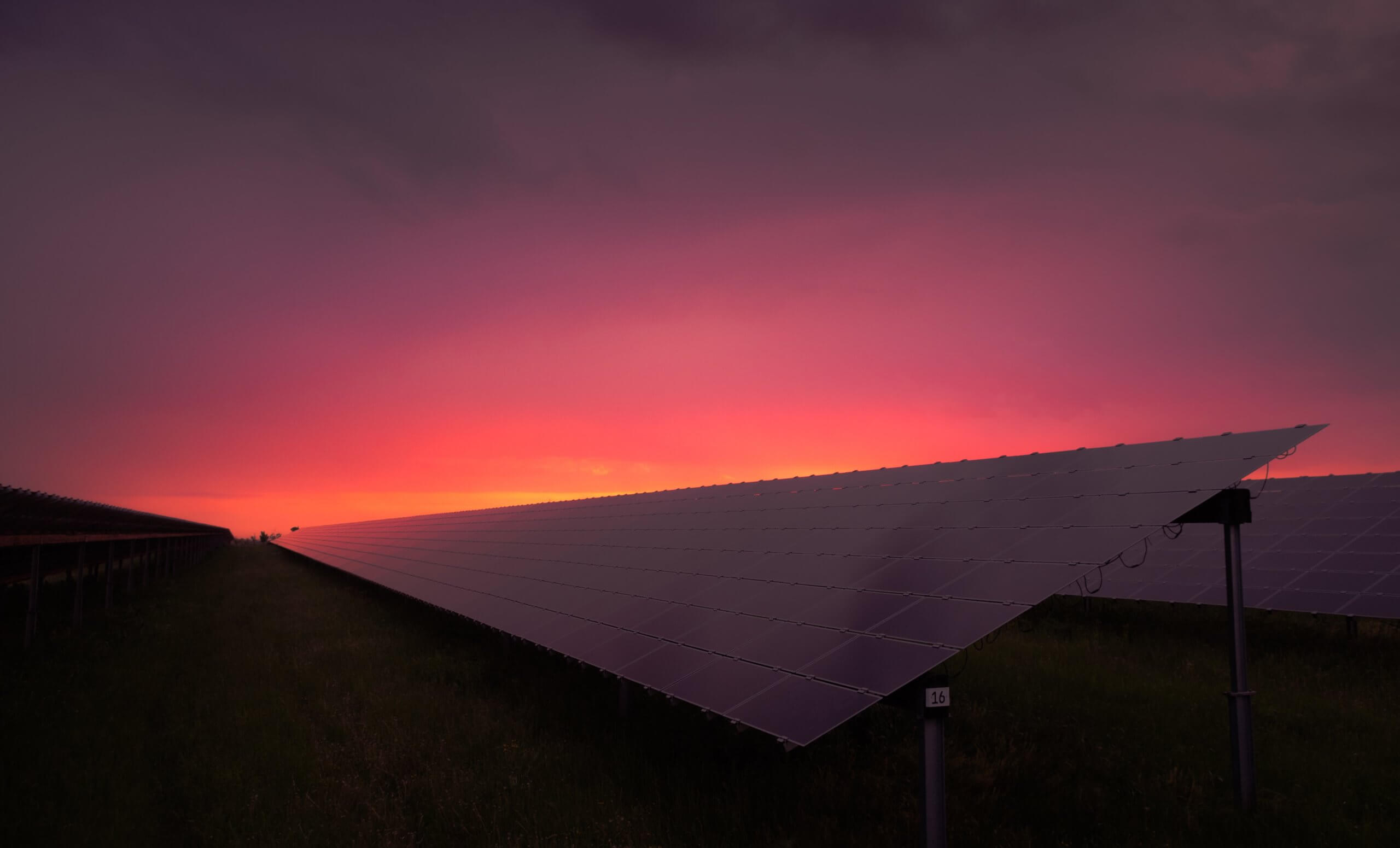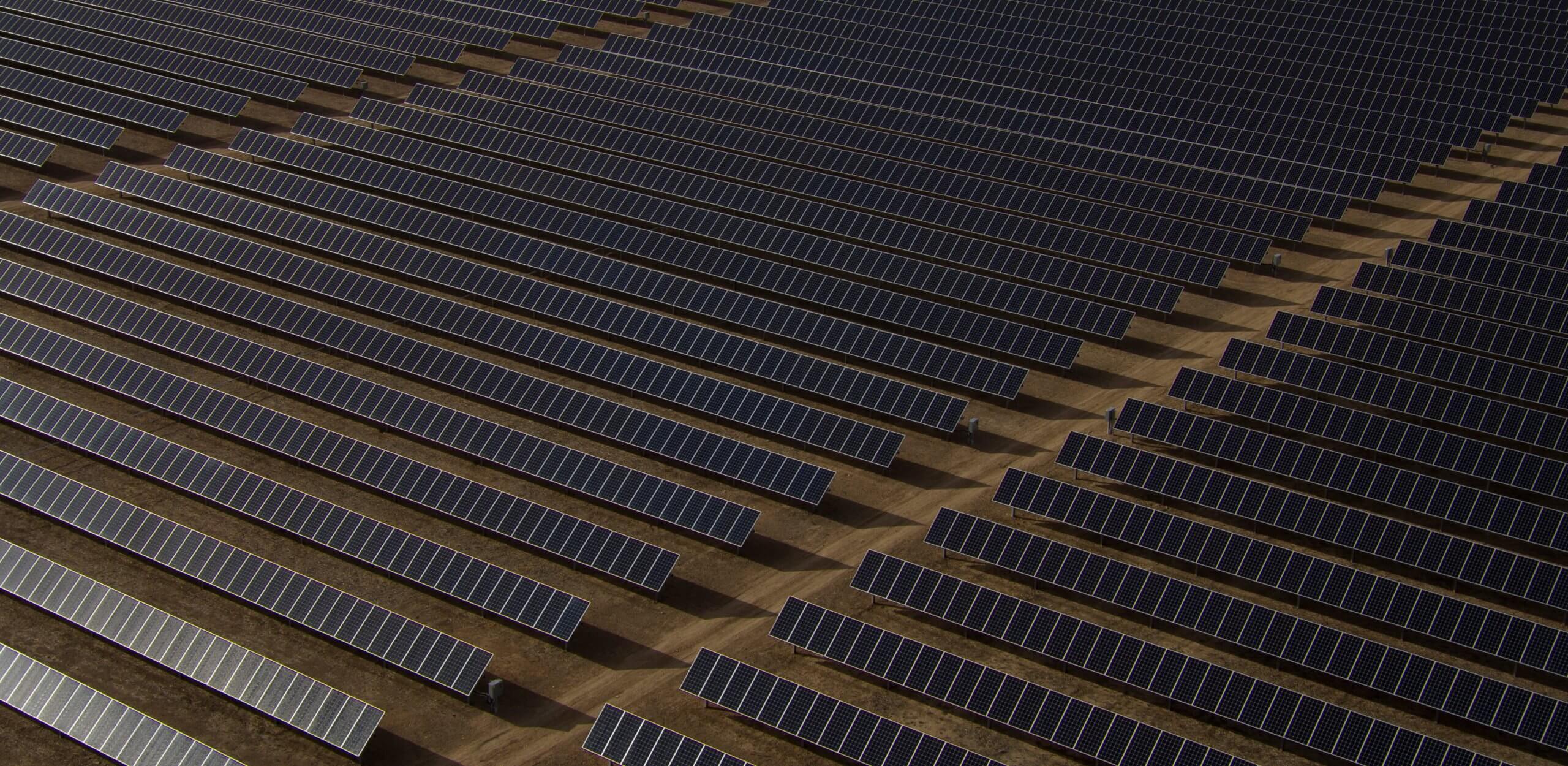American Clean Power
Utility-scale solar power facts
Solar energy—power derived from the sun—is a vast and inexhaustible resource that can supply a significant portion of domestic and global electricity needs. In addition to being a vital source of clean energy, utility-scale solar power creates American jobs, drives innovation, and strengthens our economy.
Statistics
22M
3rd
261,000
Explaining utility-scale solar power
There are two primary types of solar energy technologies in use today: solar photovoltaic (PV) and concentrating solar thermal power (CSP). Each has its own distinct use and application.
Explaining utility-scale solar power
Solar PV is the primary type of solar energy being deployed in the U.S. and around the world. PV cells, typically made of silicon, are sandwiched between a combination of glass or plastics and connected together to form larger solar panels or modules.
Explaining utility-scale solar power
Solar PV modules are further interconnected to form arrays of varying sizes—from a dozen or more modules on a typical rooftop residential system to upwards of hundreds of thousands at larger, commercial and industrial utility-scale solar projects.
Explaining utility-scale solar power
Most solar PV projects use single-axis tracking systems that let panels track the sun along a single line as it moves across the sky, improving production. More sophisticated, dual-axis systems rotate panels in two directions, capturing even more sunlight throughout the day.
Explaining utility-scale solar power
Solar PV systems also include inverters, electrical hardware that converts the PV panels’ direct current (DC) power output to the alternating current (AC) power needed on the grid, allowing the electricity generated by solar power to feed back into the electric grid safely and efficiently.
Explaining utility-scale solar power
Some solar power plants employ a very different system of capturing and converting the sun’s energy: concentrating solar thermal power (CSP). Whereas solar PV plants convert the sun’s rays into electrical energy, CSP systems convert the sun’s heat into usable thermal energy.
Explaining utility-scale solar power
CSP systems use vast fields of mirrors to reflect and concentrate sunlight onto receivers filled with liquid. These receivers collect solar energy and convert it to heat. This heat is then used to produce electricity through steam-powered turbines or stored for later use.
The answers to all your utility-scale solar power questions
Is solar energy reliable?
Solar energy is inevitably variable by nature since it depends on the availability of sunlight. For example, solar power systems cannot produce electricity at night, and their output can vary during the day depending on local weather conditions.
Since supply and demand needs to be closely matched on the electricity grid, other sources of electricity generation are used when solar energy is not available. This is a natural part of balancing multiple generation sources on the grid. For example, at times of peak sun and solar generation, solar plants can produce at their maximum while other generation sources—such as natural gas and coal—are ramped down.
As energy storage options become more prevalent and cost-effective, variable generation solar plants can couple energy storage (such as batteries) to smooth out their variable nature or prolong generation into the evening after the sun goes down.
What federal tax incentives are available to support utility-scale solar power?
Various provisions in the Internal Revenue Code support investment in utility-scale solar energy equipment. These provisions reduce the after-tax cost of investing in solar property, thereby encouraging taxpayers, businesses, investors, independent power producers, utilities, and other entities to invest in solar.
Under current law, solar tax incentives are scheduled to phase down in the coming years from their 2019 rates. The credit rate for solar was 30% through 2019, 26% in 2020, and 22% in 2021. Solar energy has a permanent 10% investment tax credit that will go into effect in 2022.
How have tariffs impacted the U.S. solar energy industry?
Negatively.
The impacts of tariffs have not been felt evenly across the solar industry’s manufacturing segments (e.g., polysilicon production, ingot and wafer production, solar cell production, and module assembly). To date, the tariffs have not encouraged expansion of U.S. manufacturing in the more technologically advanced segment of the PV manufacturing supply chain, namely the production of crystalline-silicon solar cells.
However, U.S. production of solar modules, into which cells are assembled, rose in 2018, and a few companies, including one Chinese manufacturer, have opened solar module assembly plants in the United States. Module prices globally have declined steeply over the past decade. While prices in the U.S. market have fallen as well, despite the tariffs on imported cells and modules, they remained 61% higher on average than the global average selling price in 2018, according to the National Renewable Energy Laboratory.
Tariffs have also negatively impacted project development, as higher costs resulting from the tariffs forced projects to either be delayed or cancelled altogether.
Does it create pollution to manufacture solar panels?
Solar power is essentially carbon-free. A small amount of pollution is created during the manufacturing and construction processes; however, the fuel used (the sun) is free, plentiful, and pollution-free.
As the solar industry matures and the first projects reach their end of useful life, the solar industry is working closely with recyclers across the United States to establish comprehensive recycling programs that ensure re-use of as much material and equipment as feasible.
Does ACP focus on both residential and utility-scale solar power?
ACP tracks the residential solar PV market; however the organization’s main focus is on the commercial, industrial, and utility-scale solar PV market. Residential PV systems are often around 5 kW in size while utility-scale systems are typically defined as upwards of 1 MW. Increasingly, utility-scale systems provide hundreds of megawatts and cover thousands of acres, allowing them to generate clean, renewable power for entire communities rather than individual homes.







